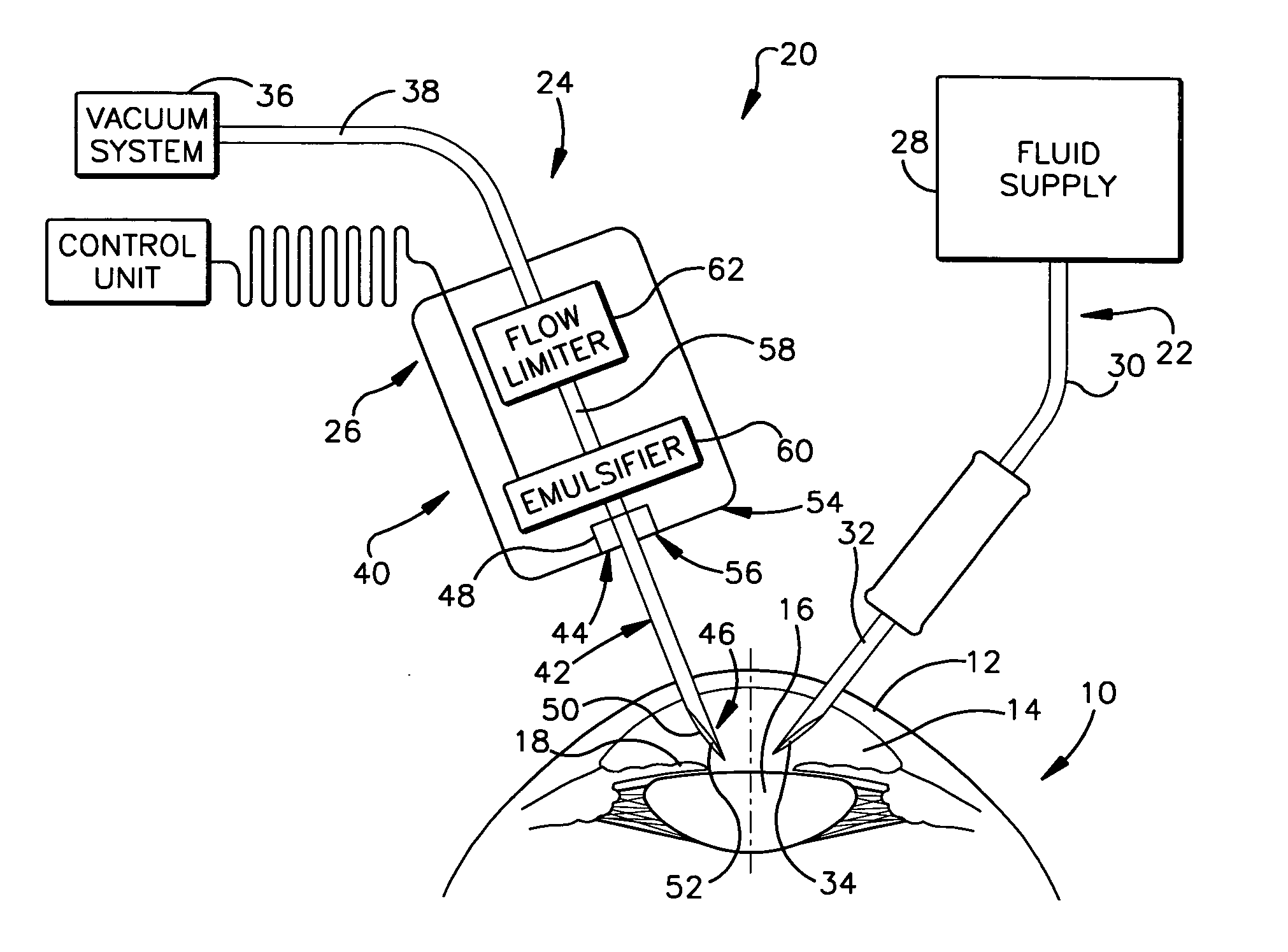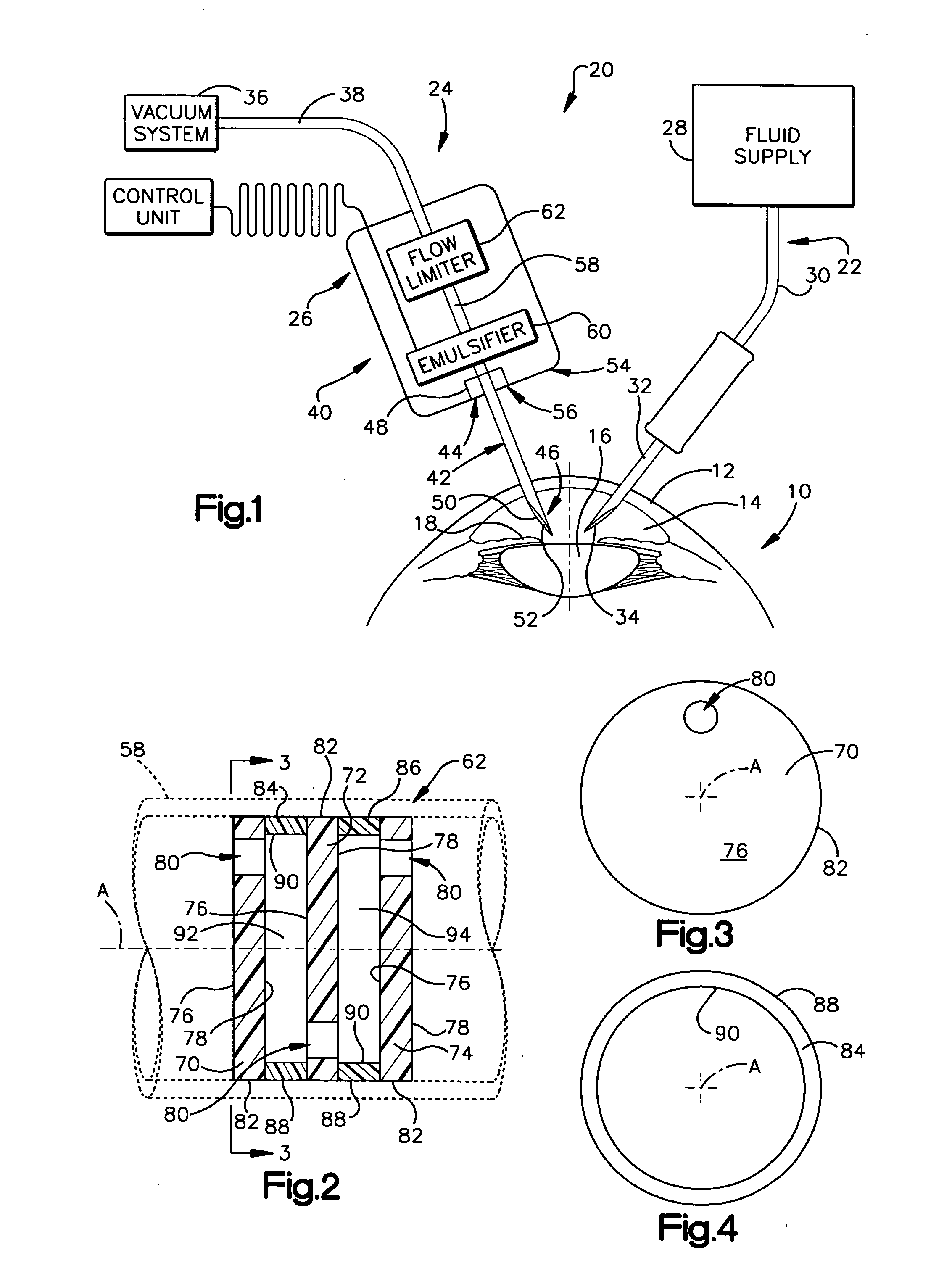Device for controlling fluid flow in an aspiration system
a technology of fluid flow and aspiration system, which is applied in the direction of suction devices, suction irrigation systems, eye surgery, etc., can solve the problems of eye damage, eye damage, and eye injury, and achieve the effect of improving the safety and comfort of patients
- Summary
- Abstract
- Description
- Claims
- Application Information
AI Technical Summary
Problems solved by technology
Method used
Image
Examples
Embodiment Construction
[0018]FIG. 1 illustrates an eye 10. The eye 10 includes a cornea 12 that partially defines a fluid-filled anterior chamber 14 of the eye. A lens 16 and an iris 18 are located within the anterior chamber 14.
[0019]FIG. 1 also illustrates a phacoemulsification system 20 for removing the lens 16 of the eye 10. The phacoemulsification system 20 includes an irrigation system 22, an aspiration system 24, and a phacoemulsification tool 26.
[0020] The irrigation system 22 includes a fluid supply 28, an irrigation conduit 30, and an irrigation needle 32. The fluid supply 28 is preferably saline. The irrigation conduit 30 connects the fluid supply 28 to the irrigation needle 32. The irrigation needle 32 includes a central lumen through which irrigation fluid, e.g., saline, flows. Irrigation fluid exits the lumen of the irrigation needle 32 at an opening 34 located at an end of the needle.
[0021] The aspiration system 24 includes a vacuum system 36 and an aspiration conduit 38. The vacuum syst...
PUM
 Login to View More
Login to View More Abstract
Description
Claims
Application Information
 Login to View More
Login to View More - R&D
- Intellectual Property
- Life Sciences
- Materials
- Tech Scout
- Unparalleled Data Quality
- Higher Quality Content
- 60% Fewer Hallucinations
Browse by: Latest US Patents, China's latest patents, Technical Efficacy Thesaurus, Application Domain, Technology Topic, Popular Technical Reports.
© 2025 PatSnap. All rights reserved.Legal|Privacy policy|Modern Slavery Act Transparency Statement|Sitemap|About US| Contact US: help@patsnap.com



